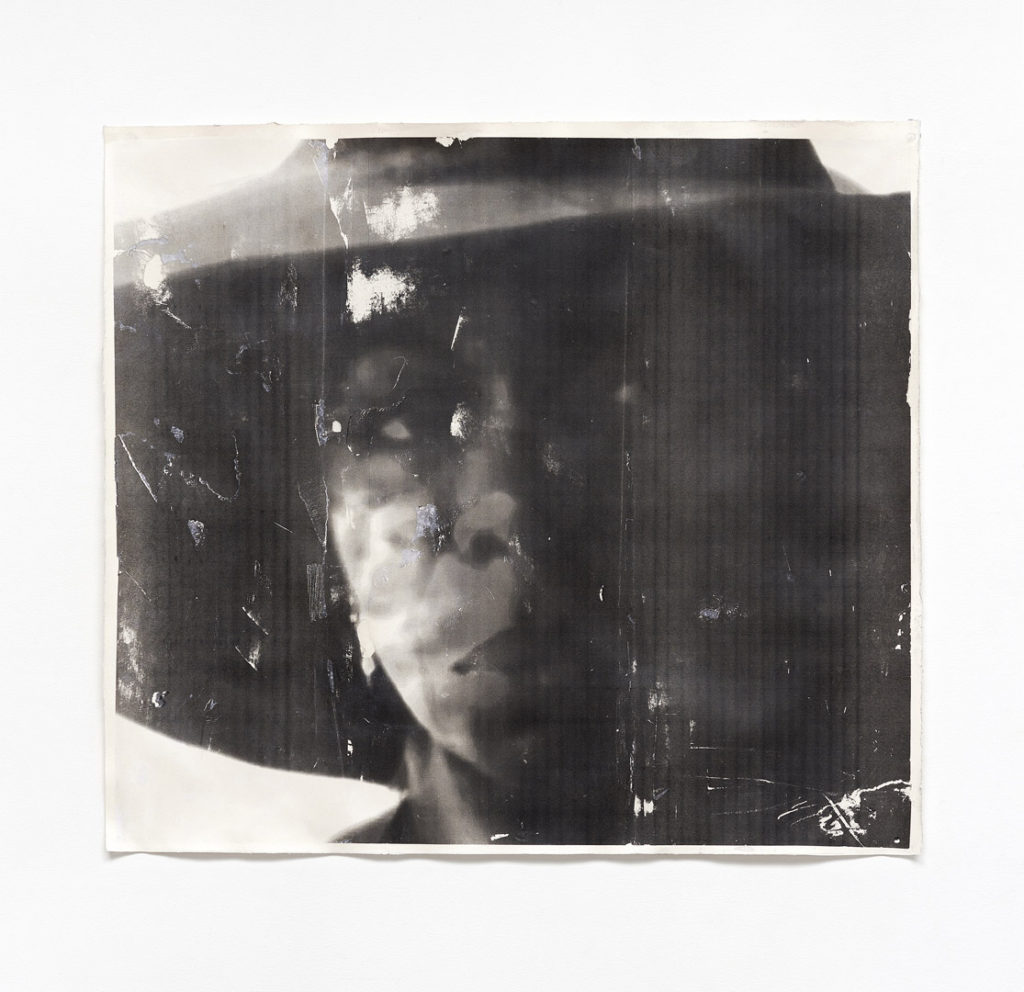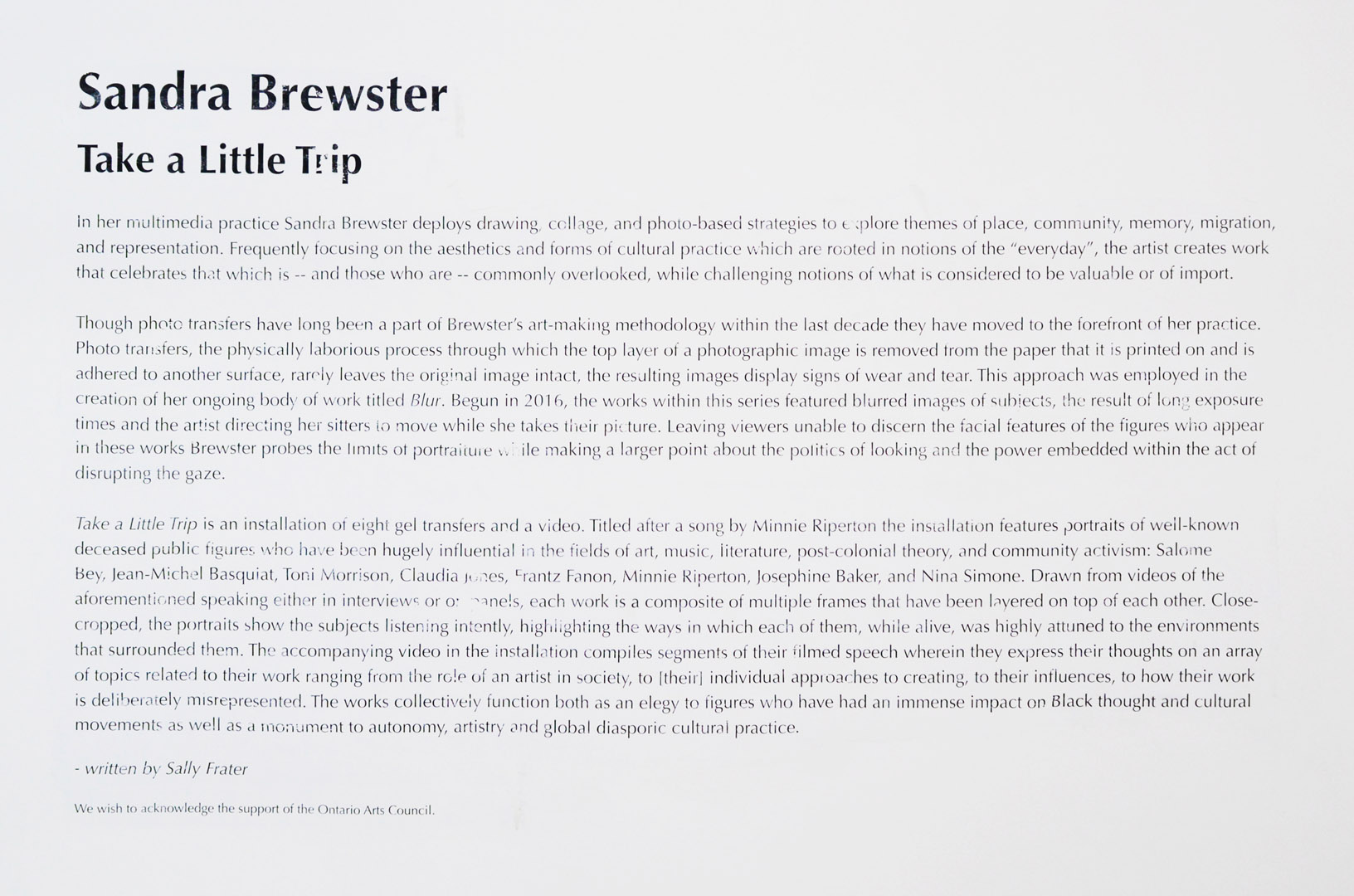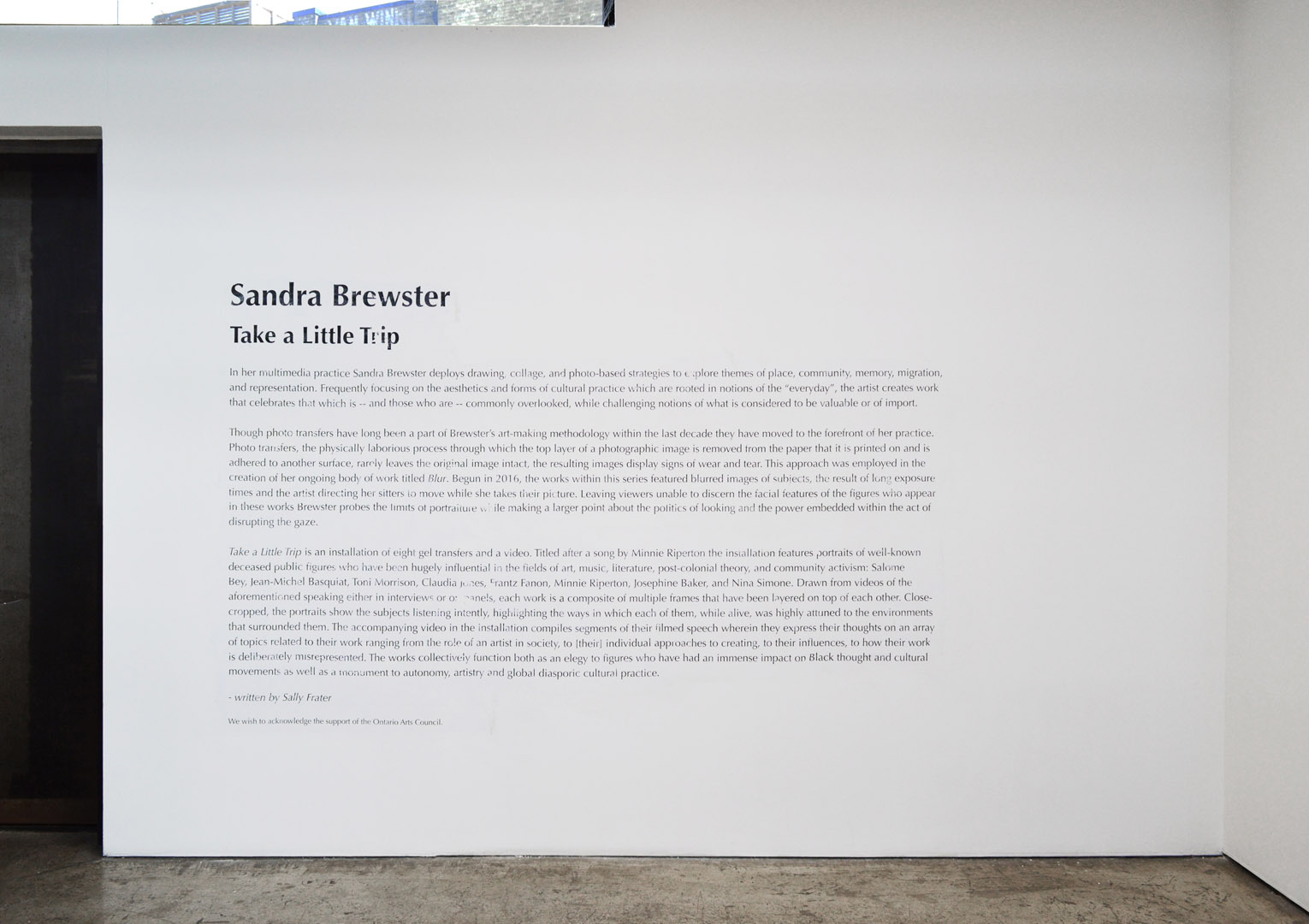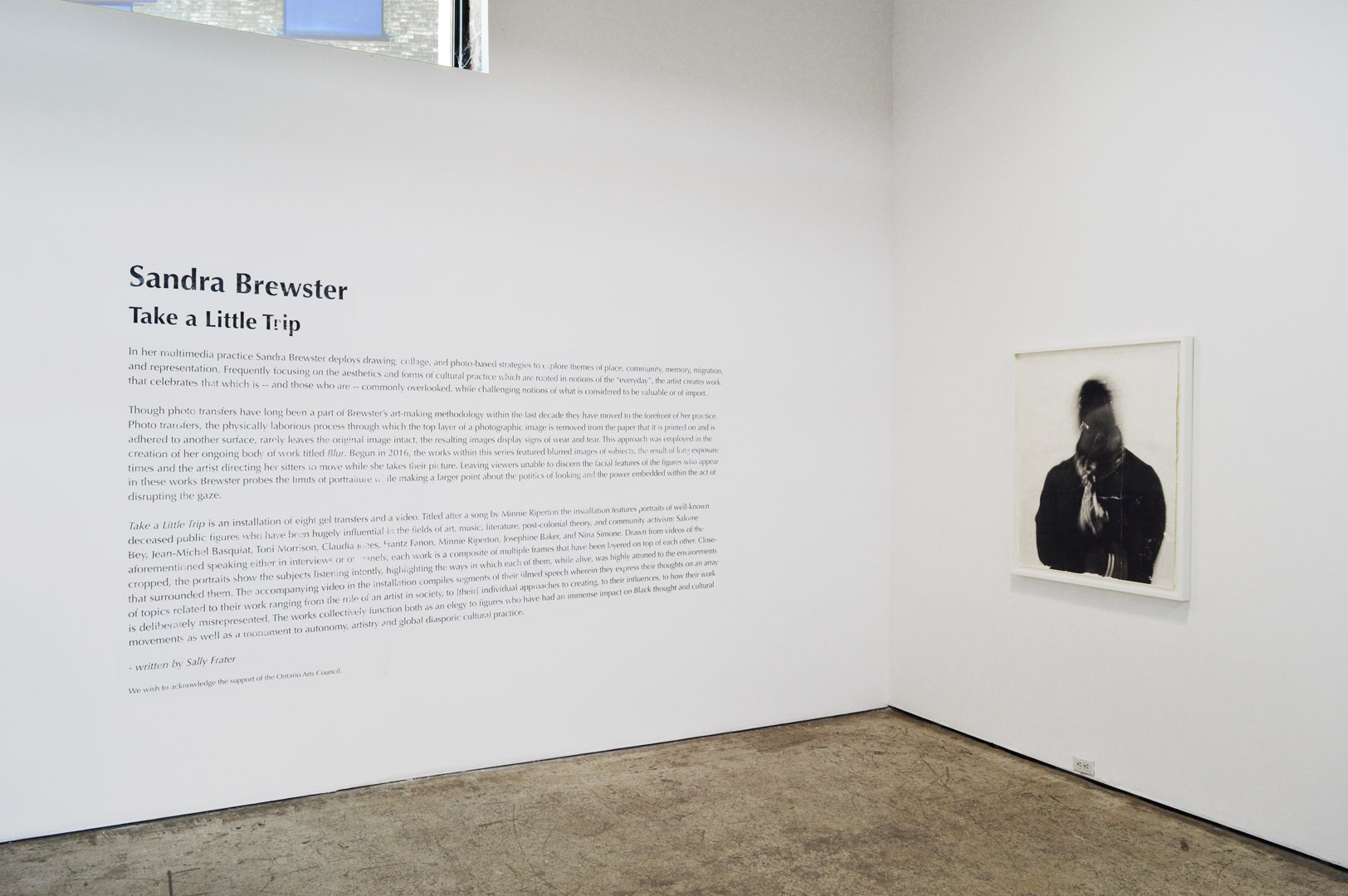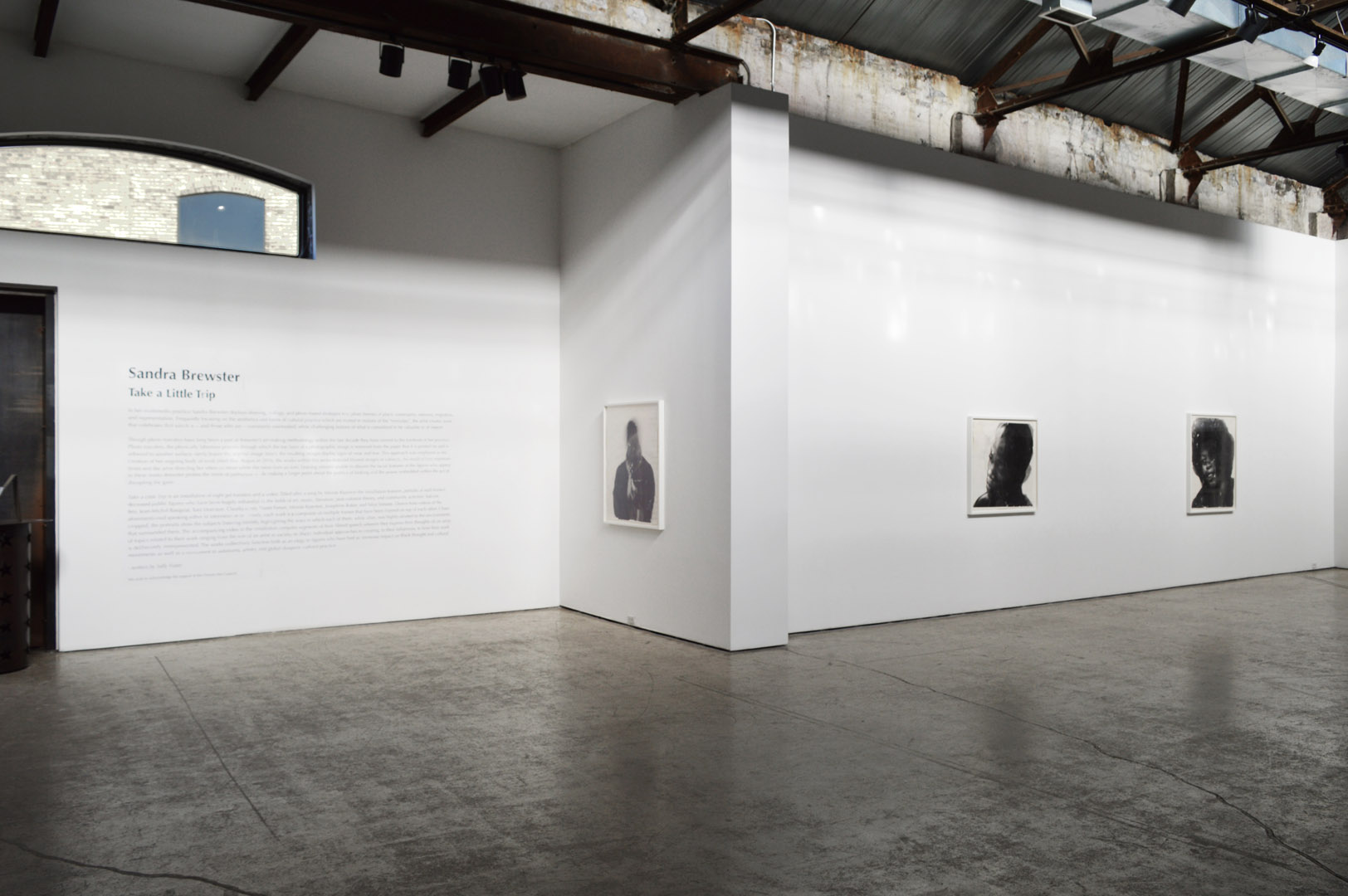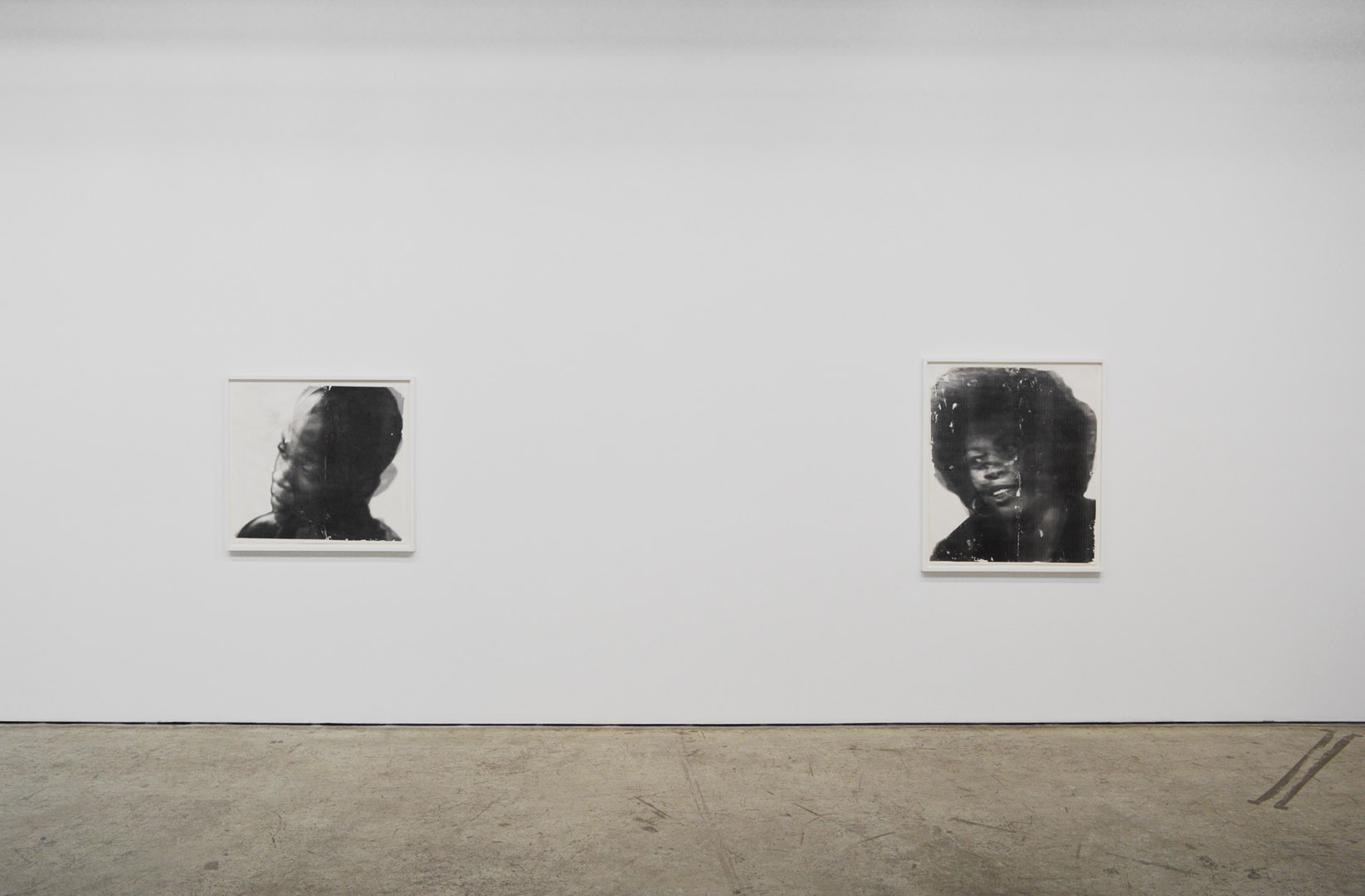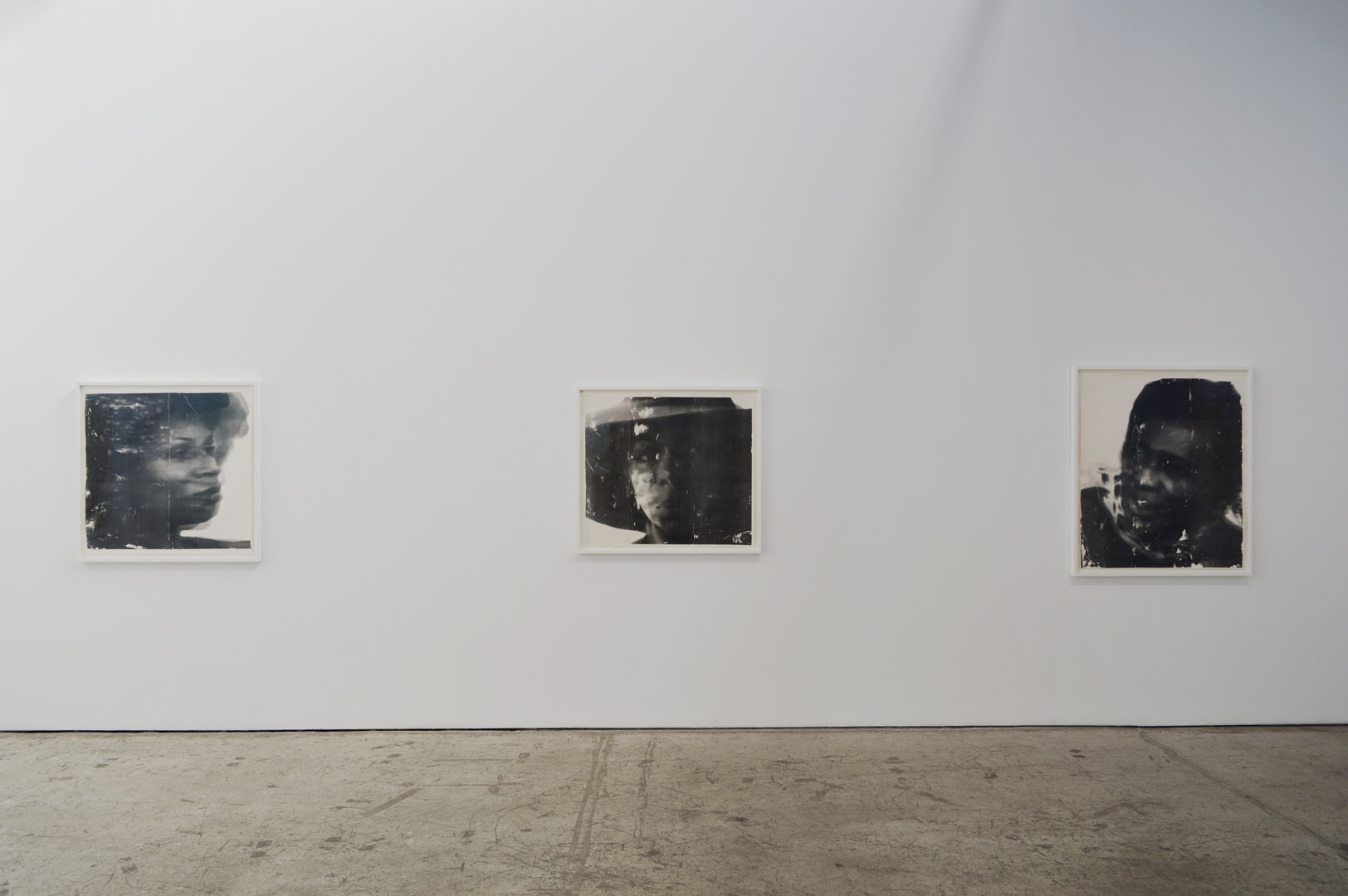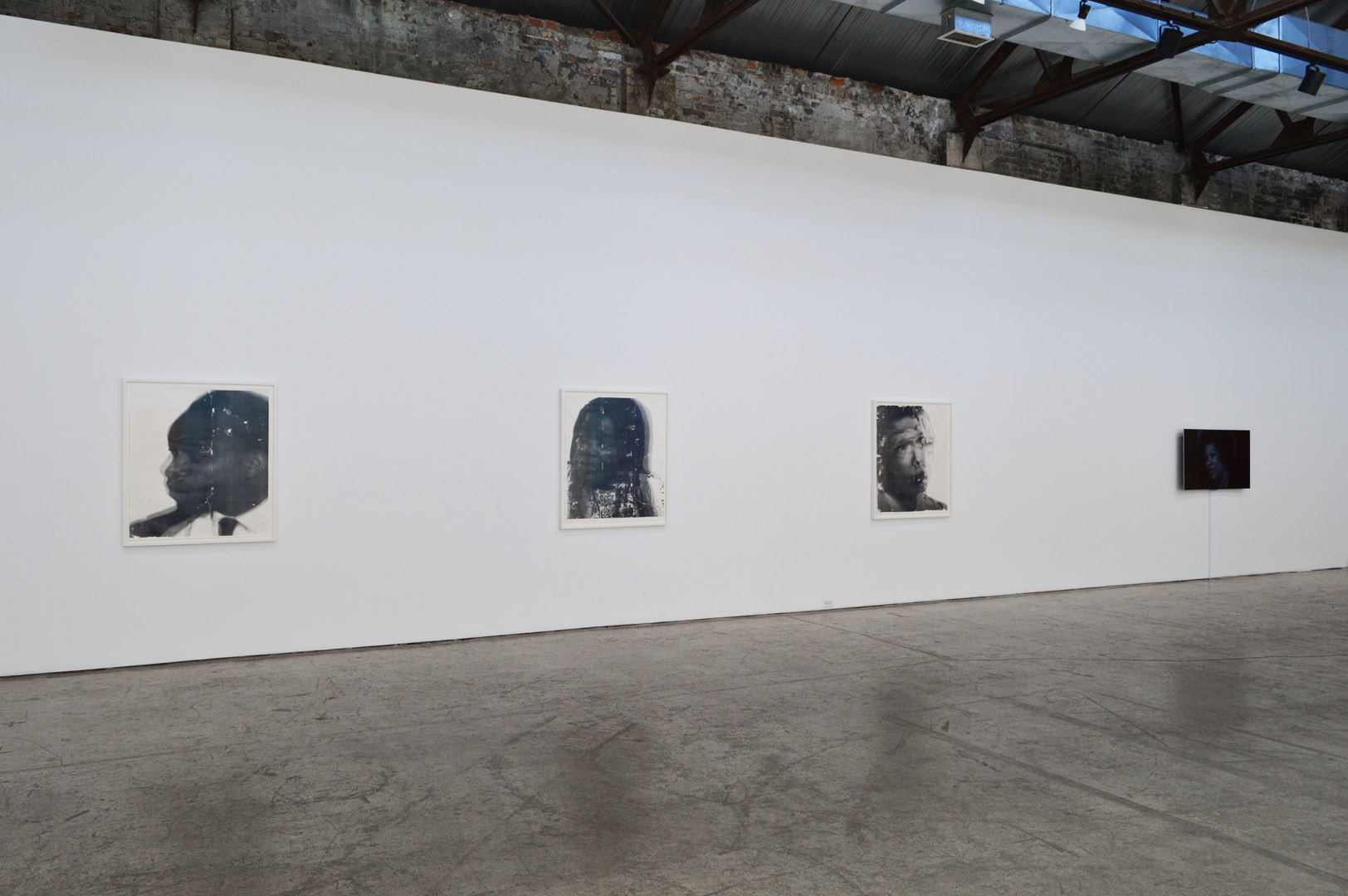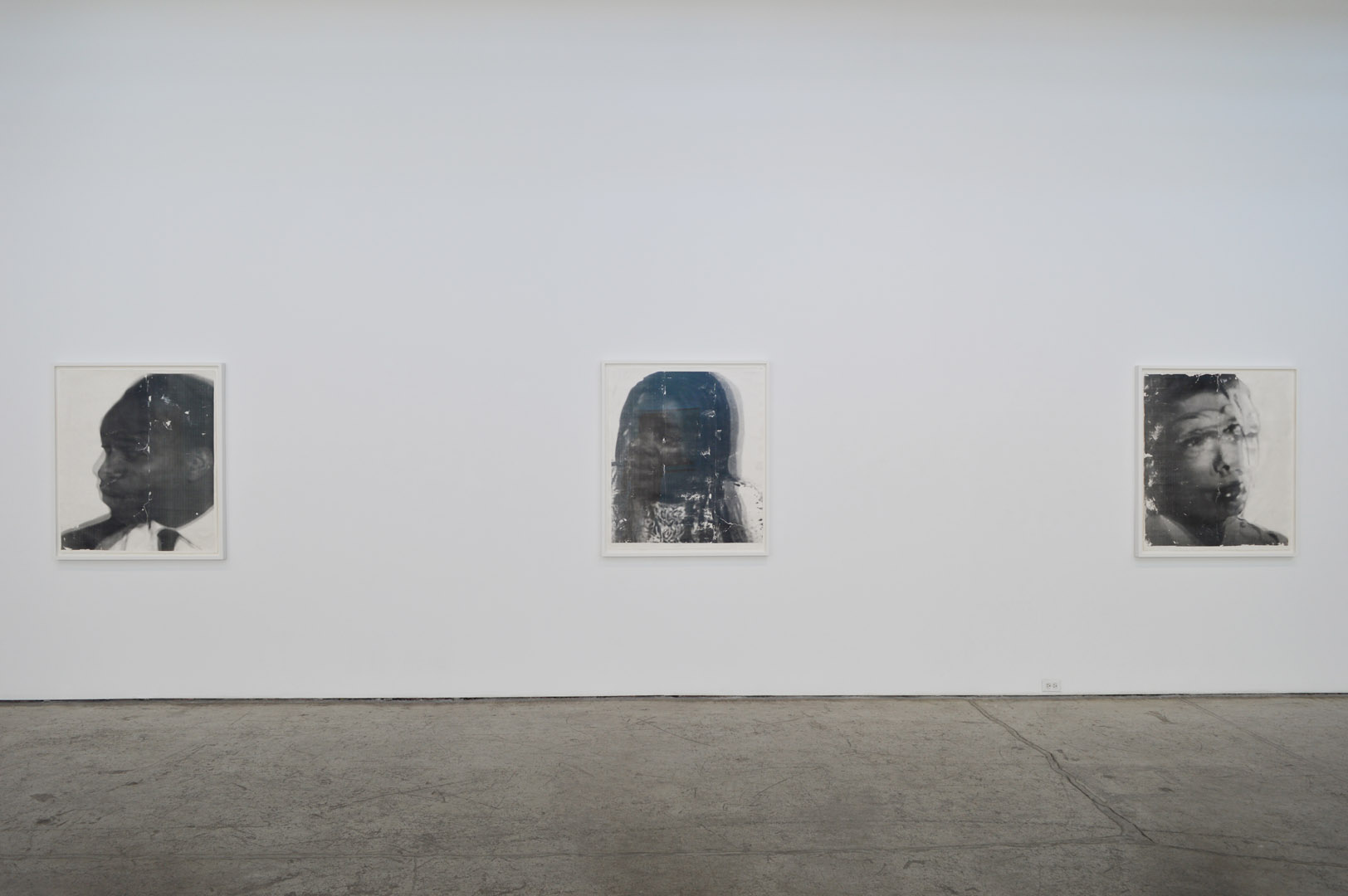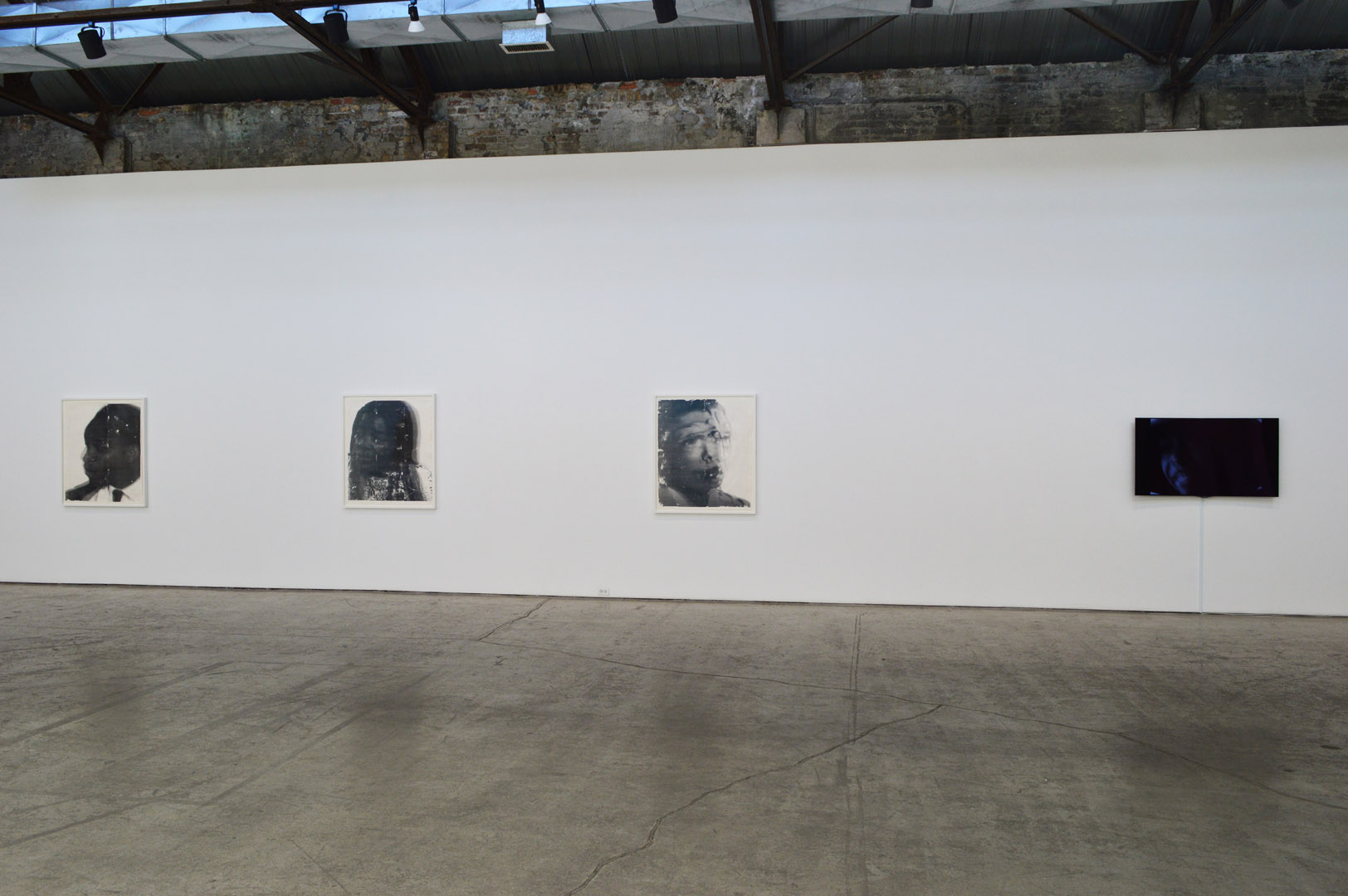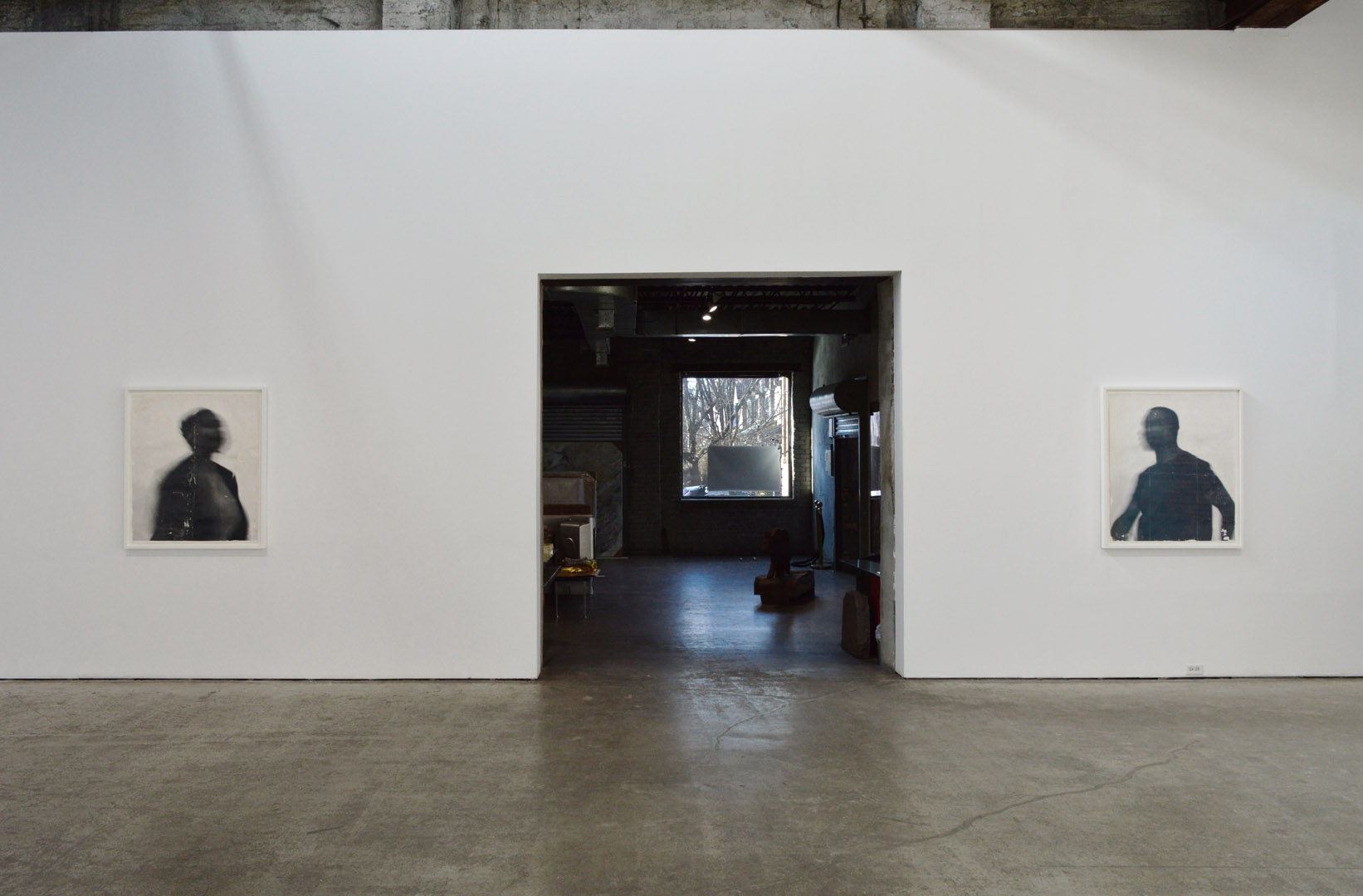Take A Little Trip
Written by Sally Frater
Blur is a series of gestural portraits made with photo-based gel transfers. I use the medium as a metaphor for movement or change from one place to another, specifically in reference to the migration of my parents and their peers who left Guyana for Toronto in the late 1960s. Inspired by the preciousness of old photographs and their relationship to time and memory, the series mimics and somewhat exaggerates the physicality of those photographs by revealing the imperfections in the form of creases, tears, and folds left as a result from the process of making the work.1 – Sandra Brewster
In her multimedia practice Sandra Brewster deploys drawing, collage, and photo-based strategies to explore themes of place, community, memory, migration, and representation. Frequently focusing on the aesthetics and forms of cultural practice which are rooted in notions of the “everyday”, the artist creates work that celebrates that which is — and those who are — commonly overlooked, while challenging notions of what is considered to be valuable or of import.
Though photo transfers have long been a part of Brewster’s art-making methodology, within the last decade they have moved to the forefront of her practice. Photo transfers, the physically laborious process through which the top layer of a photographic image is removed from the paper that it is printed on and is adhered to another surface, rarely leaves the original image intact, the resulting images display signs of wear and tear. This approach was employed in the creation of her ongoing body of work titled Blur. Begun in 2016, the works within this series featured blurred images of subjects, the result of long exposure times and the artist directing her sitters to move while she takes their picture. Leaving viewers unable to discern the facial features of the figures who appear in these works Brewster probes the limits of portraiture while making a larger point about the politics of looking and the power embedded within the act of disrupting the gaze.2
For her inaugural exhibition at Olga Korper Gallery the artist has brought together two separate bodies of work, Blur and Take a Little Trip. The works in both series share an aesthetic but seem to be on a conceptual and formal continuum rather than operating as replicas of one another. The three pieces that are drawn from Blur feature subjects who are photographed from the waist up while the photographs in Take a Little Trip feature close-up images of the subjects’ heads. In Brewster’s desire to capture forms of movement that prevents the subjects from being fixed to a particular moment or perspective, the resulting blurring effect has rendered their facial features to the point of almost being illegible. This, coupled with the fact that these works are untitled, cloaks these figures within anonymity. In contrast, Brewster has titled the photographic works in Take a Little Trip after the figures who appear in them, and their faces are recognizable despite the blurring that is also an element of how they appear. Ultimately, the two bodies of work diverge: Blur traffics in opacity while Take a Little Trip offers repeating moments of directness and clarity. 3
Take a Little Trip is an installation of eight gel transfers and a video. Titled after a song by Minnie Riperton the installation features portraits of well-known deceased public figures who have been hugely influential in the fields of art, music, literature, post-colonial theory, and community activism: Salome Bey, Jean-Michel Basquiat, Toni Morrison, Claudia Jones, Frantz Fanon, Minnie Riperton, Josephine Baker, and Nina Simone. Drawn from videos of the aforementioned speaking either in interviews or on panels, each work is a composite of multiple frames that have been layered on top of each other. Close-cropped, the portraits show the subjects listening intently, highlighting the ways in which each of them, while alive, was highly attuned to the environments that surrounded them. The accompanying video in the installation compiles segments of their filmed speech wherein they express their thoughts on an array of topics related to their work ranging from the role of an artist in society, to [their] individual approaches to creating, to their influences, to how their work is deliberately misrepresented. As opposed to Blur, which is predicated on a lack of specificity Brewster very much intends for viewers of Take a Little Trip to recognize the subjects and to hear them address their work in their own words.4
Installed around the perimeter of the gallery, the black and white works function as an elegy to figures who have had an immense impact on Black thought and cultural movements as well as a monument to autonomy, artistry and global diasporic cultural practice. At a time when it seems that we are losing so many Black figures who were leaders and stalwarts in the creative sector Brewster’s exhibition provides us with a space in which we can pay homage and remember.
We would like to acknowledge the support of the Ontario Arts Council.
1 Artist statement.
2 In fact, what Brewster does is antithetical to the intent of most portraiture which is to create a likeness of a subject that is legible.
3 In “Sandra Brewster and Ming Smith: UnKnowing the Image” Dr. Julie Crooks has written about Brewster’s Blur series in relation to Édouard Glissant’s writings on opacity, which posits that those reside in non-Western cultures do not need to translate or explain their culture to those who exist outside it, and that this notion of opacity can act as a form of resistance. https://micemagazine.ca/issue-four/sandra-brewster-and-ming-smith-unknowing-image
4 This is an important component of the work, as frequently when Black practitioners excel in their chosen field their work is often seen to be the result of intuition and instinct rather than that of acquired knowledge and expertise. Examples of this can be seen in early analysis and interpretation of the work of Jean-Michel Basquiat wherein both the artist and his work were infantilized and positioned as being primitive, and when sportscasters would analyze the work of Brazilian soccer star Pelé.
Opening Reception
February 19, 2022 10:00 am – 5:00 pmArtist Links
Included Artworks
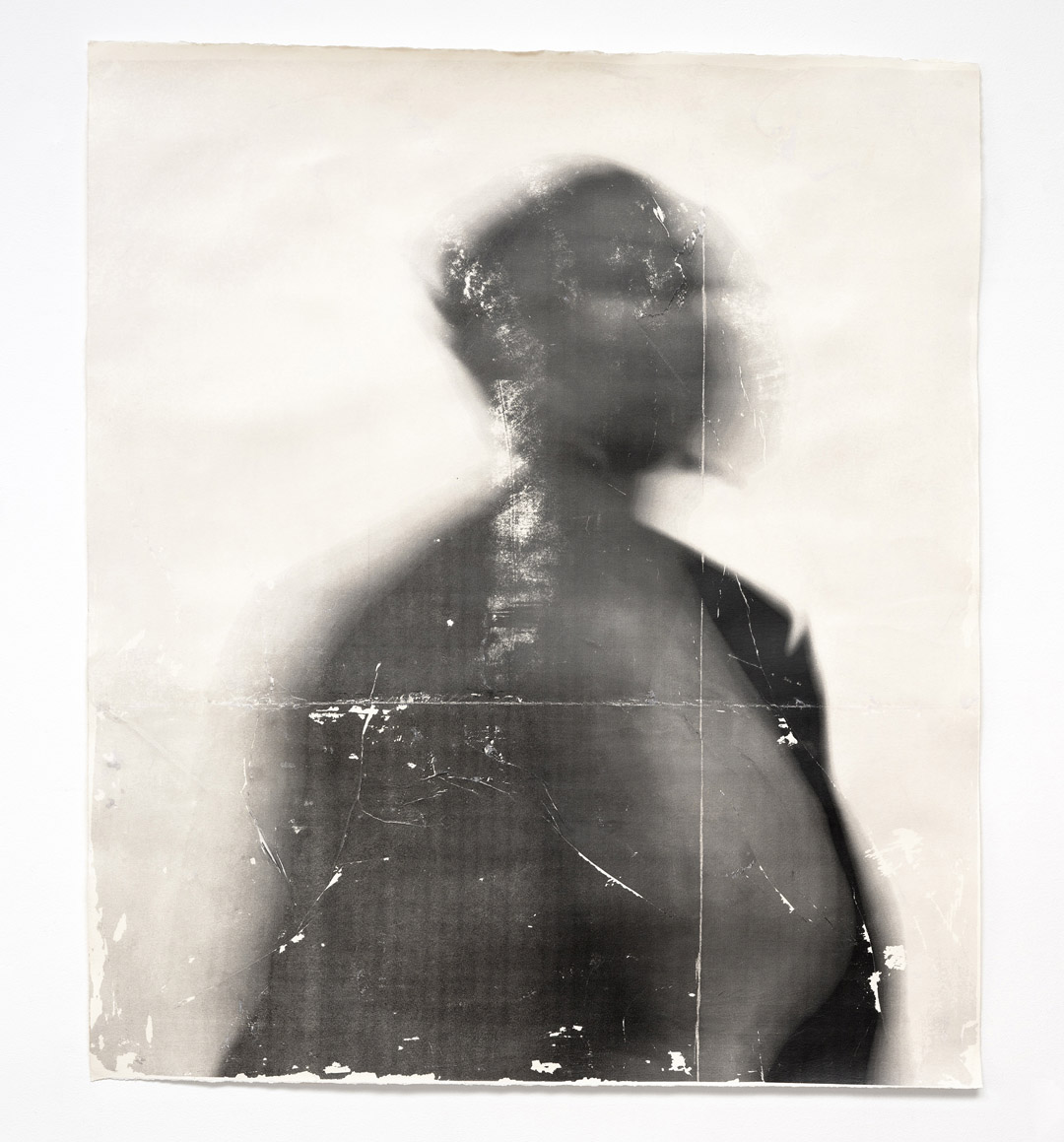
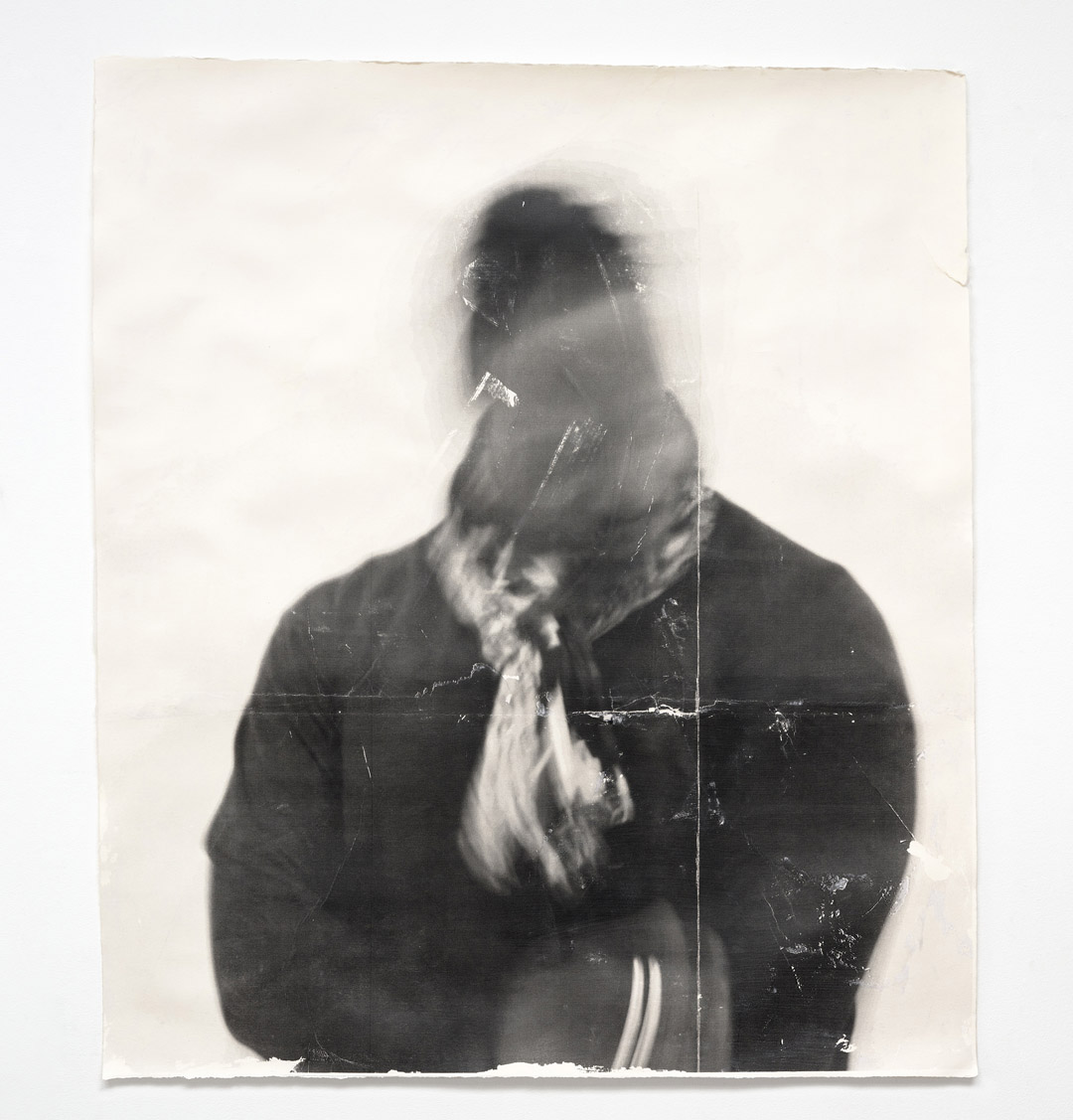
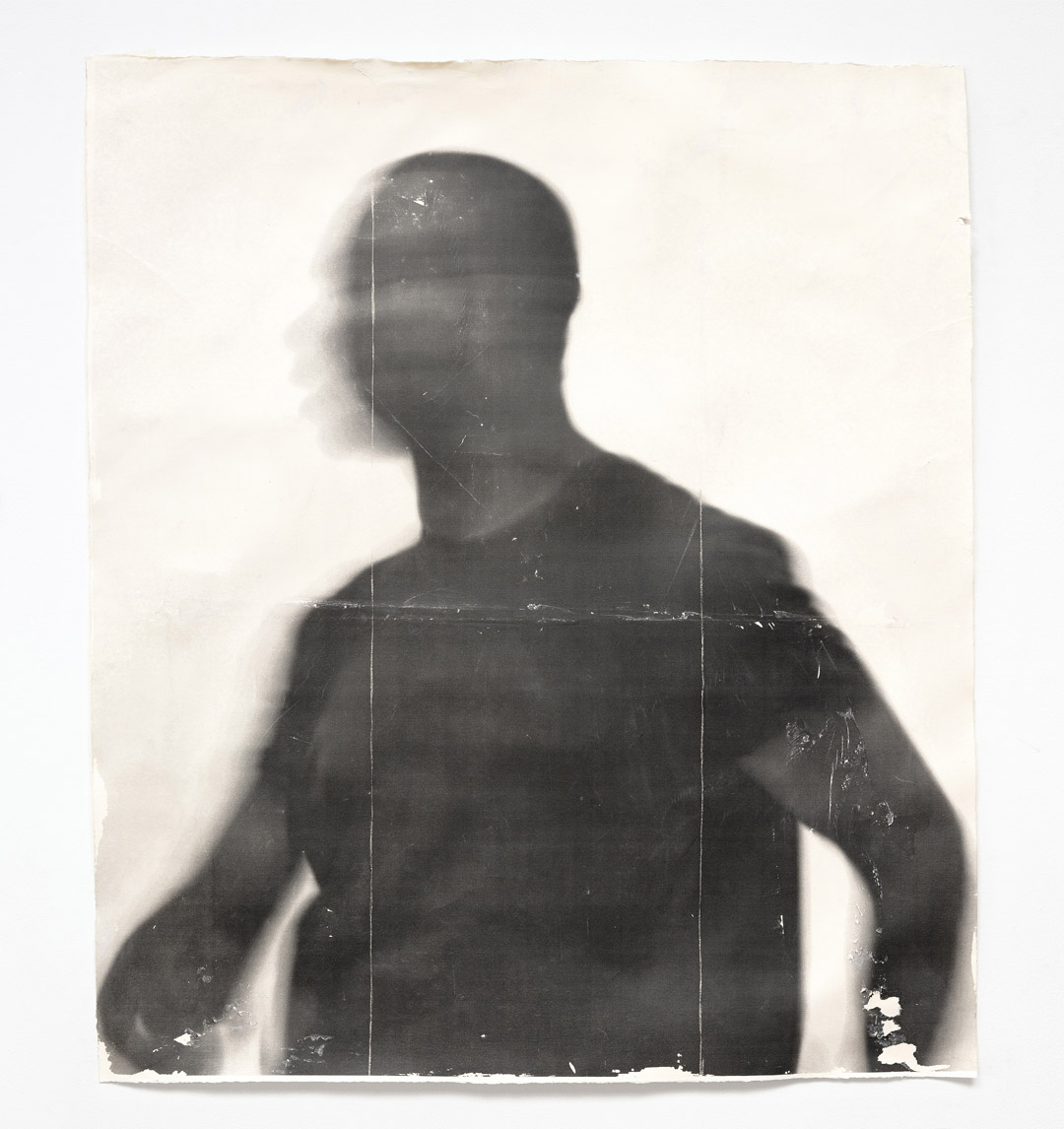
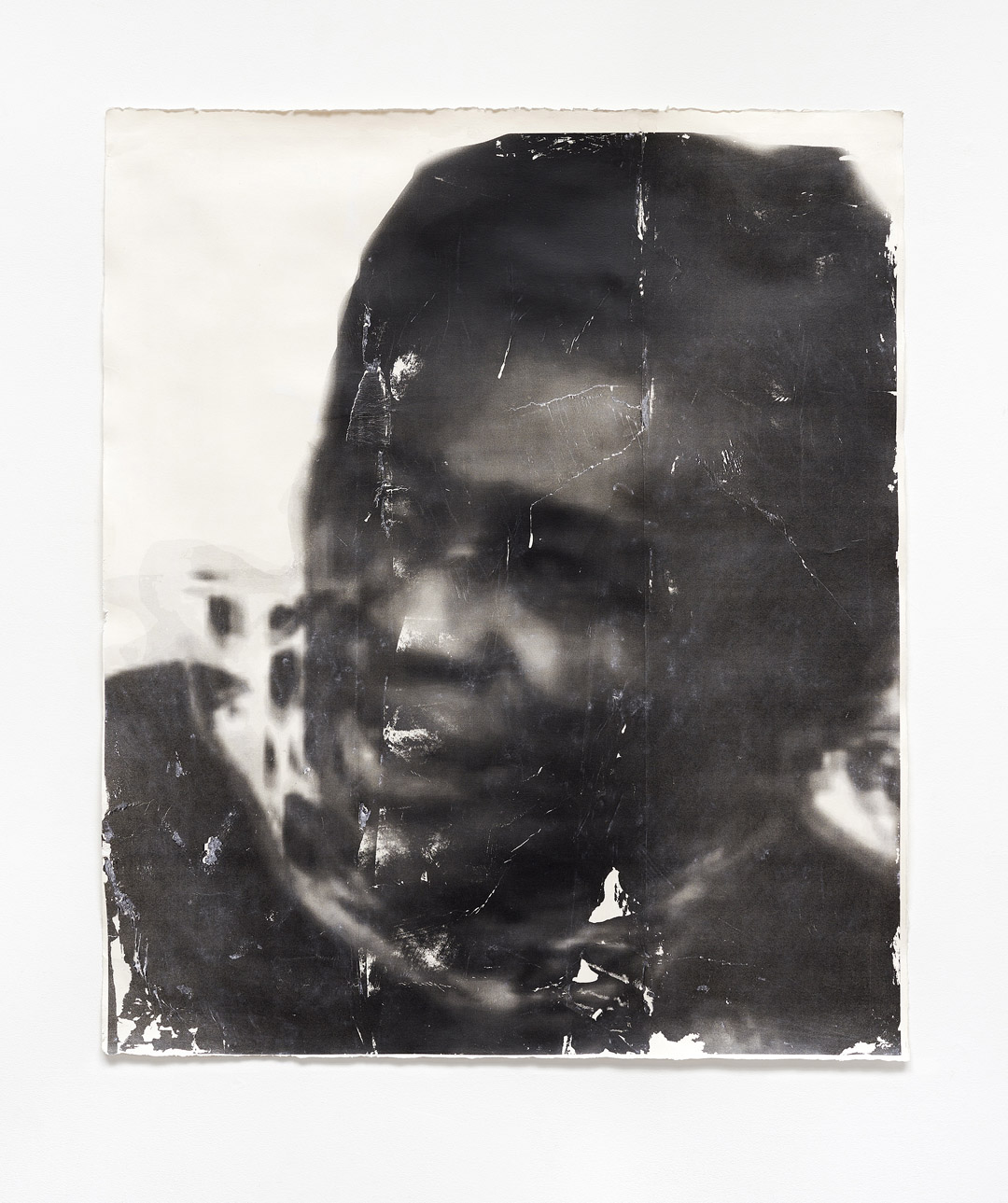
Claudia Jones, 2021
Sandra Brewsterphoto-based gel transfer on archival paper, edition of 3 45.75" x 38.25"
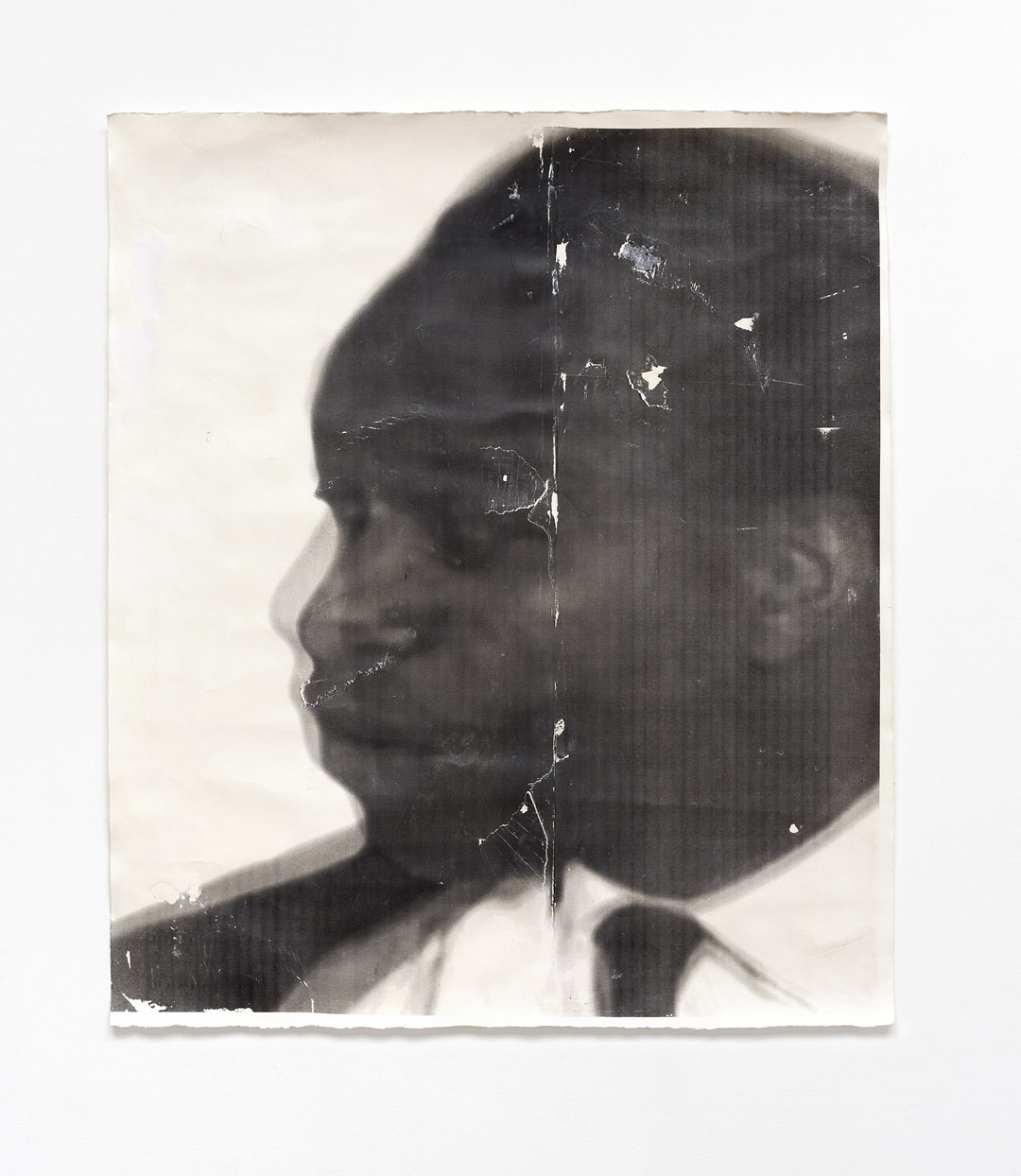
Frantz Fanon
Sandra Brewsterphoto-based gel transfer on archival paper, edition of 3 45.75" x 38.25"
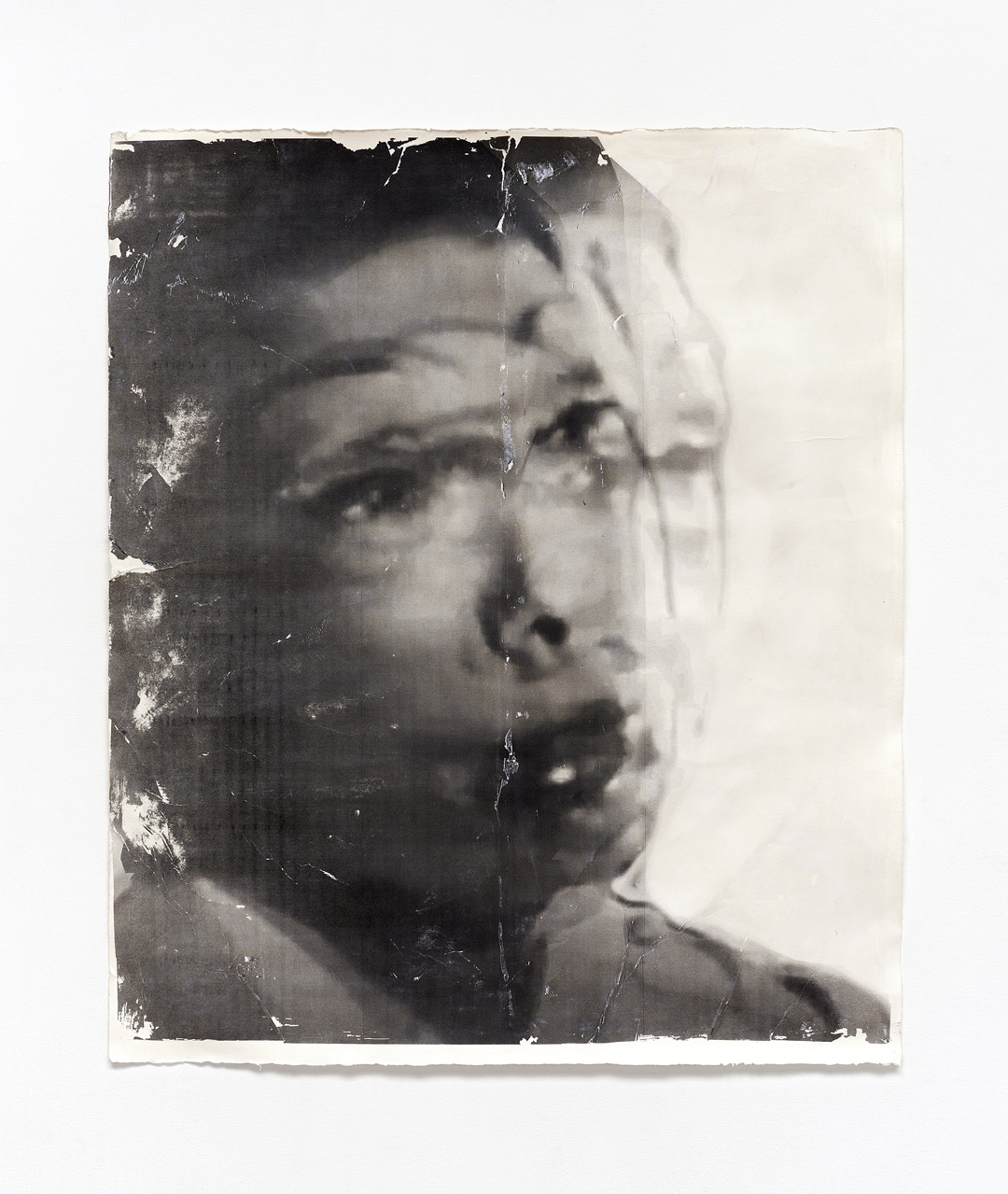
Josephine Baker, 2021
Sandra Brewsterphoto-based gel transfer on archival paper, edition of 3 45.75" x 38.25"
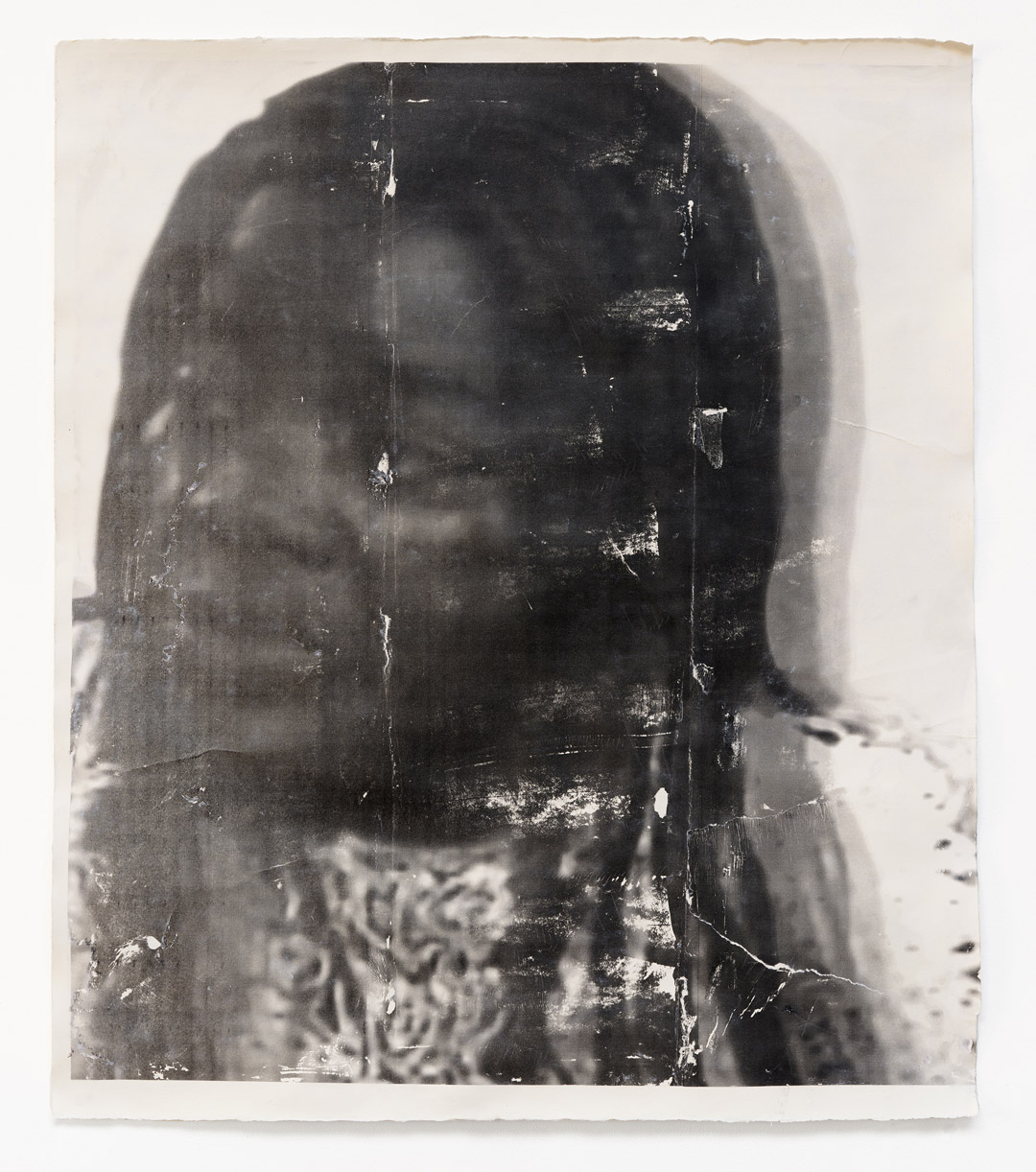
Salome Bey, 2021
Sandra Brewsterphoto-based gel transfer on archival paper, edition of 3 45.75" x 38.25"
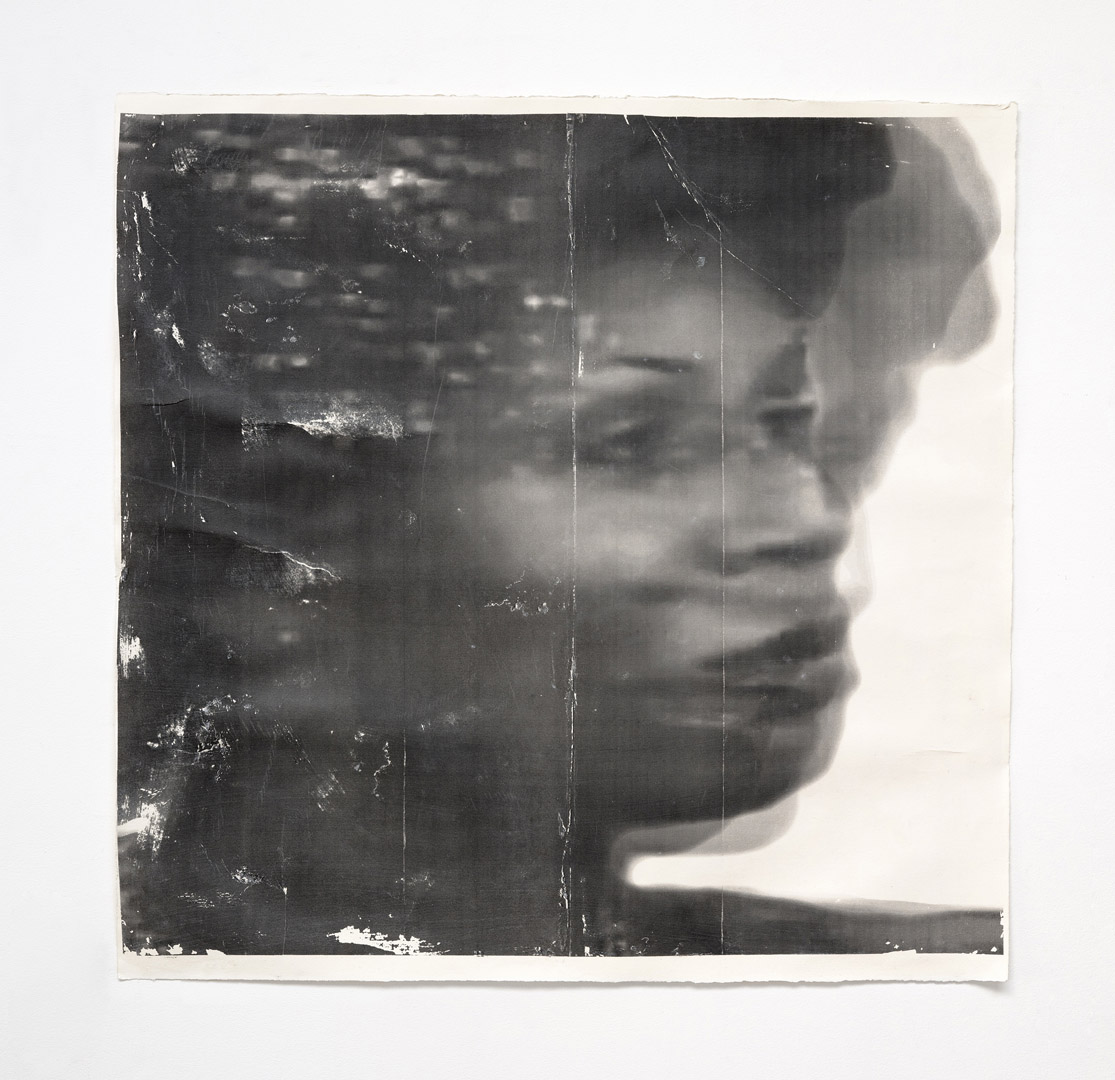
Minnie Riperton, 2021
Sandra Brewsterphoto-based gel transfer on archival paper, edition of 3 38.25" x 39"
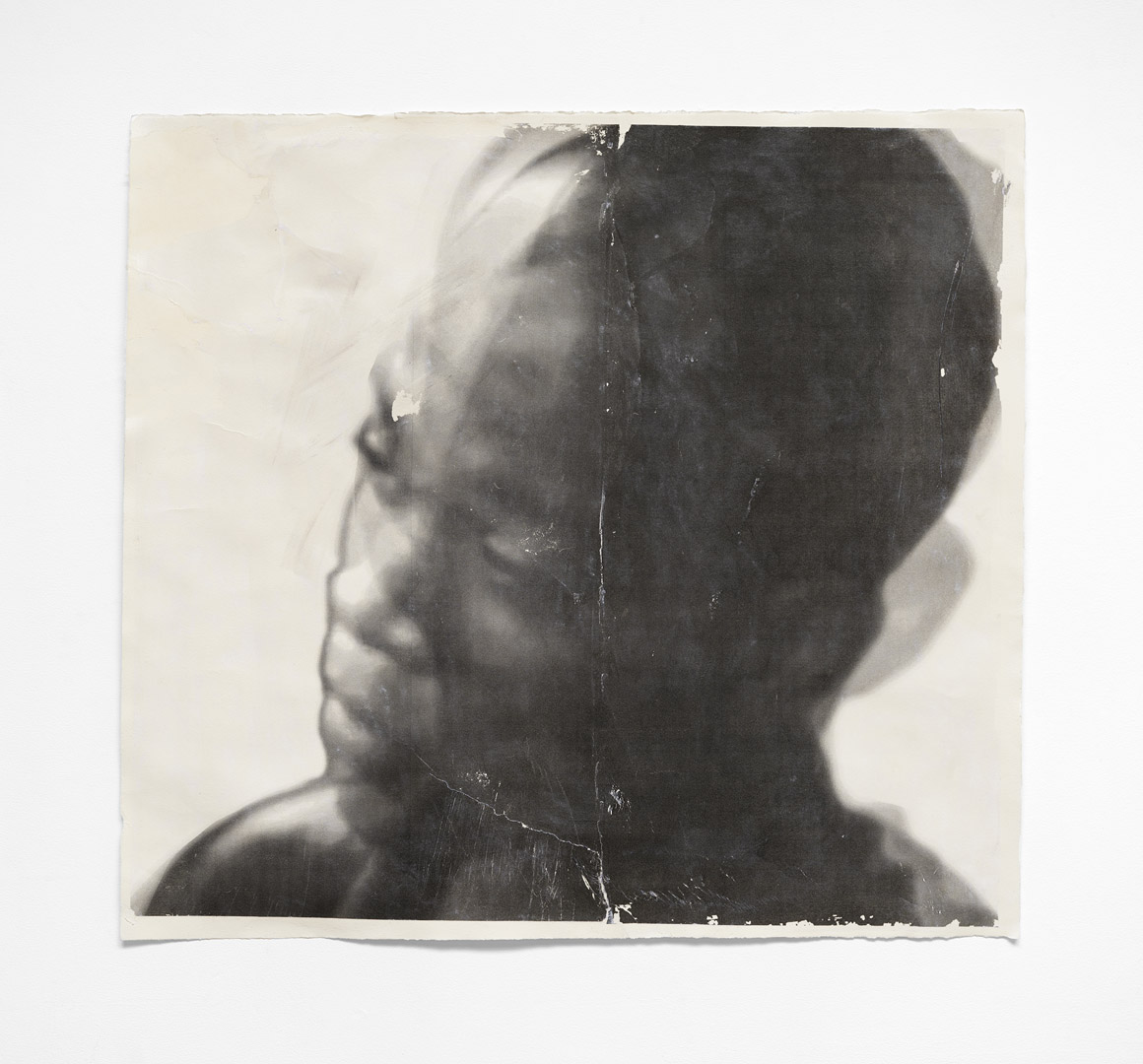
Jean Michel Basquiat, 2021
Sandra Brewsterphoto-based gel transfer on archival paper, edition of 3 36.25" x 39.5"
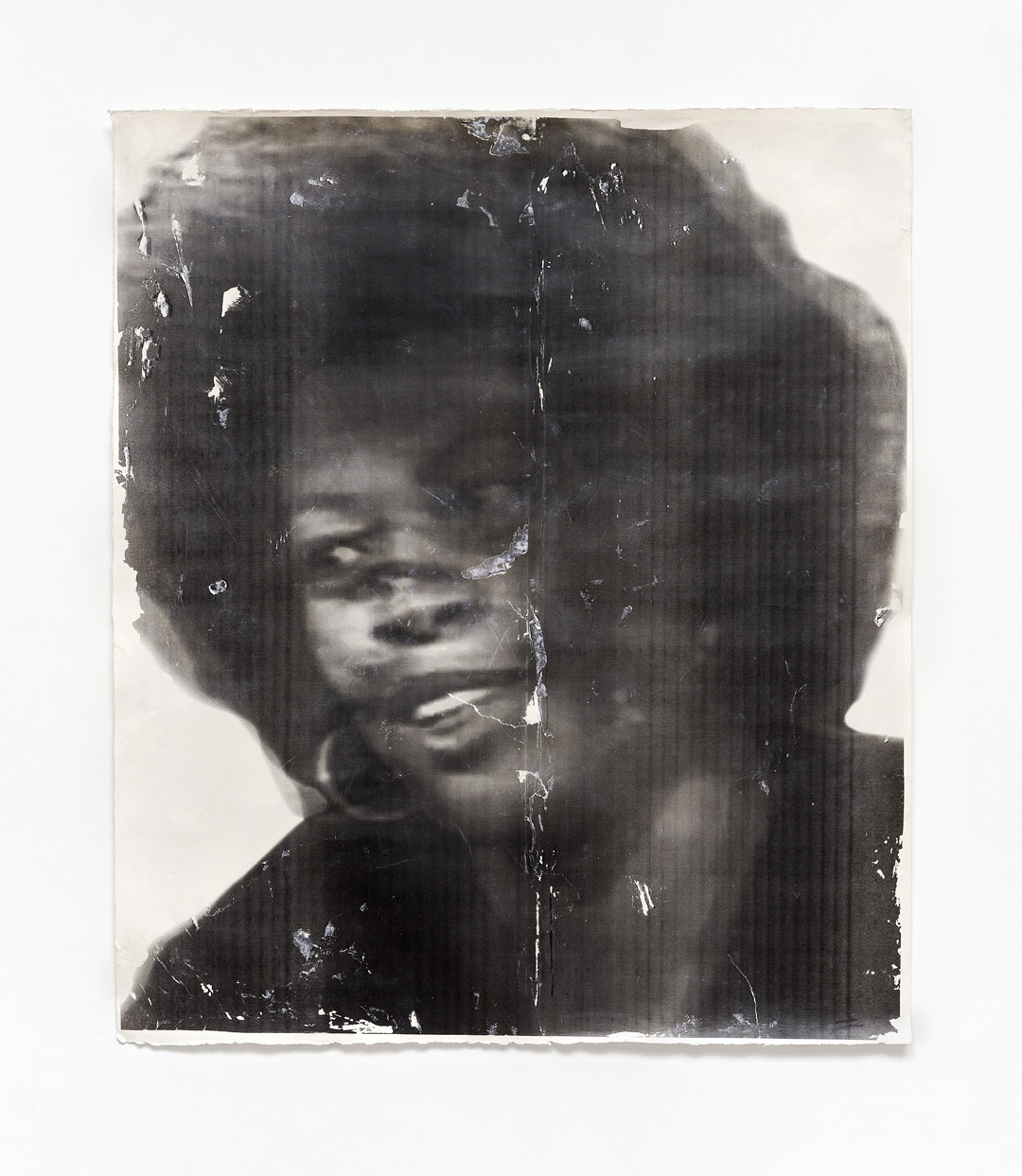
Toni Morrison, 2021
Sandra Brewsterphoto-based gel transfer on archival paper, edition of 3 45.75" x 38.25"
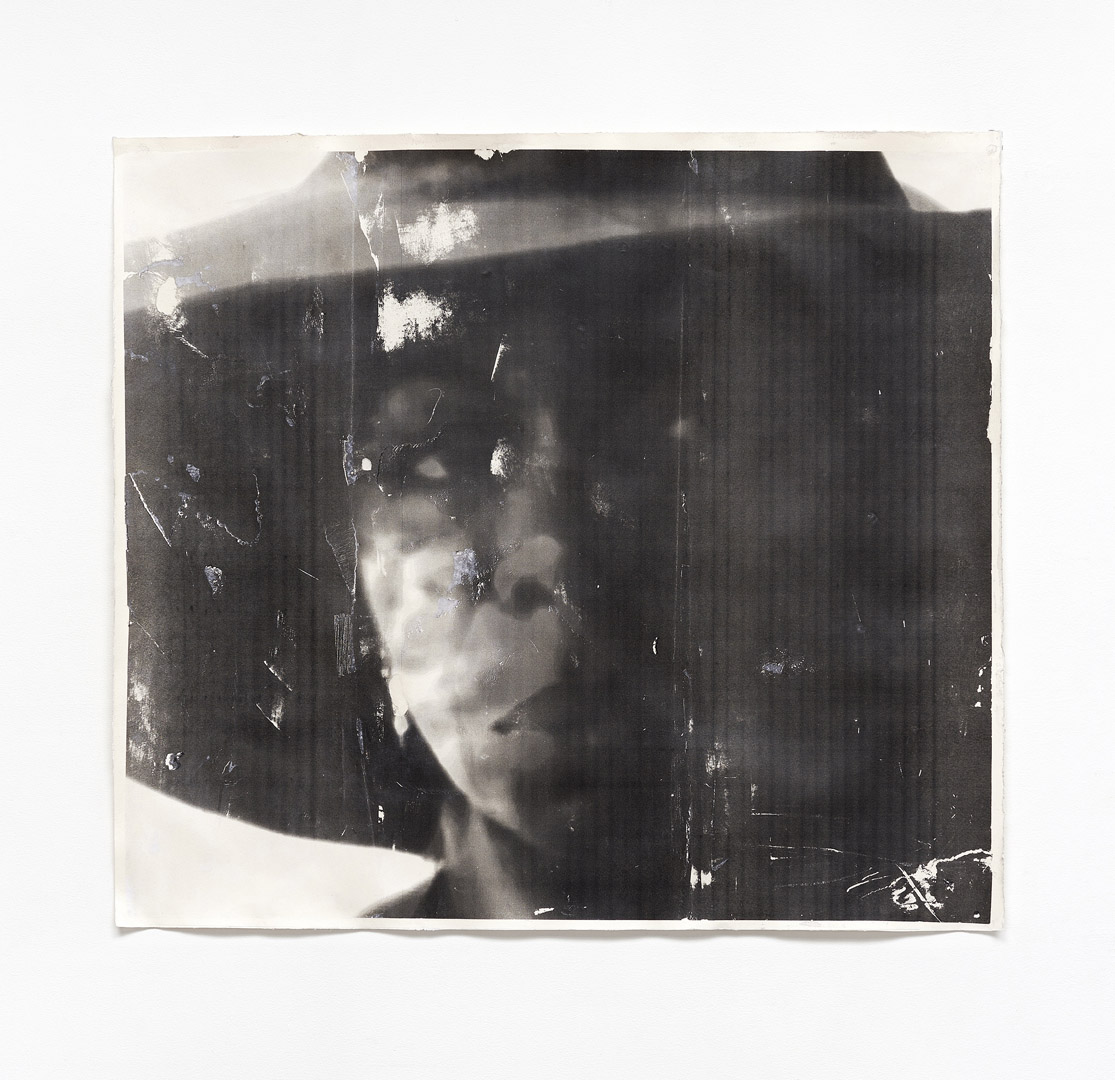
Nina Simone, 2021
Sandra Brewsterphoto-based gel transfer on archival paper, edition of 3 35.75" x 39.5"

